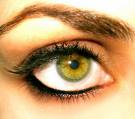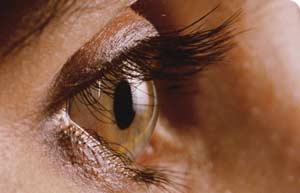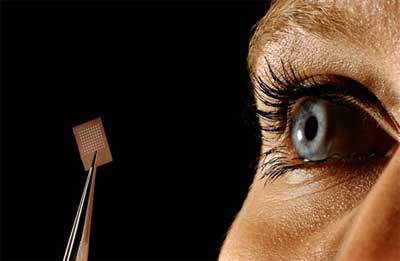London: Age-related Macular Degeneration (AMD) is the leading cause of vision loss in the UK, known to affect some 608,213 [i]. AMD is the most common cause of registrations for blindness or partial sight[ii] and is more common in women than men (vii).
 AMD affects the macula, the part of the eye that allows a person to see fine detail and gradually destroys the sharp, central vision, which is needed for seeing objects clearly, and for common daily tasks such as reading and driving2. Although it rarely results in complete blindness, it robs the individual of all but the outermost, peripheral vision, leaving only dim images or black holes at the centre of vision and often stripping those with the condition of their confidence and independence.
AMD affects the macula, the part of the eye that allows a person to see fine detail and gradually destroys the sharp, central vision, which is needed for seeing objects clearly, and for common daily tasks such as reading and driving2. Although it rarely results in complete blindness, it robs the individual of all but the outermost, peripheral vision, leaving only dim images or black holes at the centre of vision and often stripping those with the condition of their confidence and independence.
With many of us valuing sight over any other sense, it is essential that we maintain our eye health, this can helped by ensuring you are receiving key nutrients such as Omega-3 fatty acids, Vitamins C, E and A and Carotenoids. So during AMD Awareness Week (22-30 September) is a good time to remind you about what your eyes need from your diet:
· Omega-3 fatty acids: Our bodies are unable to produce Omega-3 fatty acids, so we must obtain them through our diet. DHA (Docosahexaenoic acid) is one such Omega-3. The highest concentration of DHA in our body is found within the retina, where it plays an essential role in regulating its function[i]. Omega-3 fats are also thought to protect the arteries that supply blood to the retina[ii]. Omega-3 fatty acids can be found in: Oily fish, such as salmon, herring, mack
erel, anchovies and sardines.
· Vitamins C, E and A: Are essential for eye health as they have antioxidant properties and therefore help protect against free radical molecules. Produced by the interaction of light and oxygen, free radical molecules can cause chemical damage to the retina. Studies have shown that people who eat adequate levels of antioxidants, which counteract free radical damage, tend to preserve their eyesight for longer than those who don’t[iii]. Vitamins C, E and A can be found in leafy greens = Kale / spinach / cress / parsley / leafy cabbage.
· Carotenoids: Are natural fat-soluble pigments found in certain plants and provide the bright red, orange, or yellow colour of many vegetables. Lutein and zeaxanthin are two carotenoids that accumulate in our retina, and are most concentrated in the macula and also occur in the lens of the eye. They act as antioxidants, protecting the tissue of the eyes by absorbing harmful blue light and neutralising harmful free radicals. As the body can’t produce lutein by itself, it has to be absorbed from food. Peppers, Carrots and Tomatoes are all a great source of carotenoids.
Your vision-boosting shopping list
- Oily fish, such as salmon, herring, mackerel, anchovies and sardines
- Leafy greens = Kale / spinach / cress / parsley / leafy cabbage
- Carrots
- Tomatoes
- Broccoli
- Seeds and seed oils, such as sunflower and safflower
- Nuts and nut oils, such as almonds and hazelnuts
- Red pepper
- Blackcurrant
- Kiwi fruit
- Red meats, especially beef, lamb and liver
In an ideal world, our diet would provide us with all the vitamins and minerals we need – but evidence from the National Diet and Nutrition Survey shows that a significant proportion of the UK population simply doesn’t achieve nutritional sufficiency through diet alone[1].
Ian Grierson, Professor of Ophthalmology at the University of Liverpool notes: “While research suggests that vitamins A, C, E and zinc can help keep the eye healthy, it is carotenoids, the pigments that occur naturally in plants and algae, which offer the most precise way of targeting the damage that causes sight loss. In particular, the carotenoids lutein and zeaxanthin act directly to absorb the damaging blue and near-ultraviolet light, in order to protect the macula. Any yellow or orange plants or vegetables contain them. They are also abundant in green vegetables such as kale and spinach.
“We should be eating 6mg of lutein a day, but the average consumption is only 2mg, which is way too low. In the Second World War, our average intake was 4-5mg and we weren’t even trying. But you cannot just eat vegetables alone, as lutein needs fat to be absorbed. Egg yolk is one of the UKs main sources of lutein – there is not much there, but the little there is absorbed efficiently. That is why eggs Florentine is such an effective meal – the spinach is a high source of lutein and the egg yolk maximises absorption In fact, a 2005 study at the Ohio State University, Columbus, found that carotenoids absorption was enhanced by the consumption of avocado oil and fruit.”
So, what to do is you aren’t gaining all the nutrients you need from your diet?










